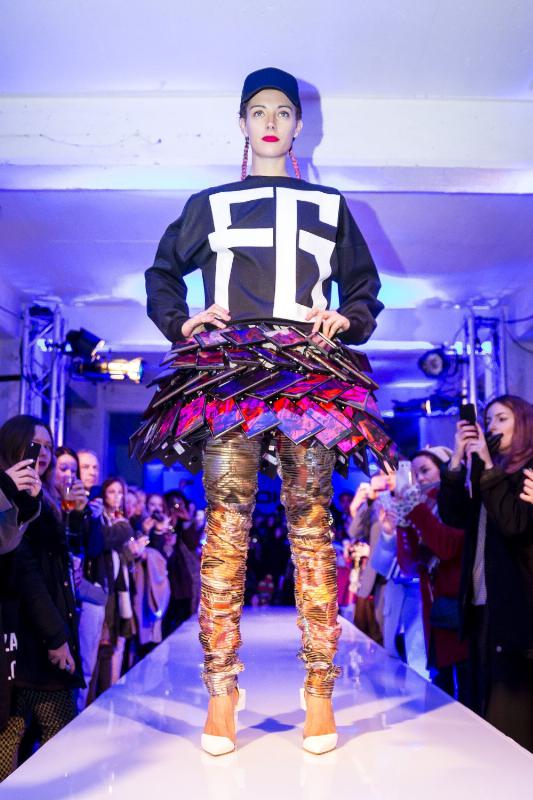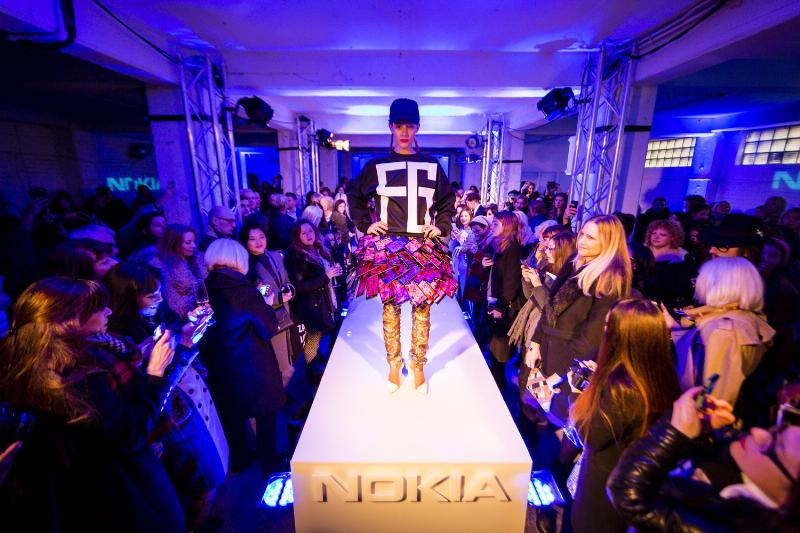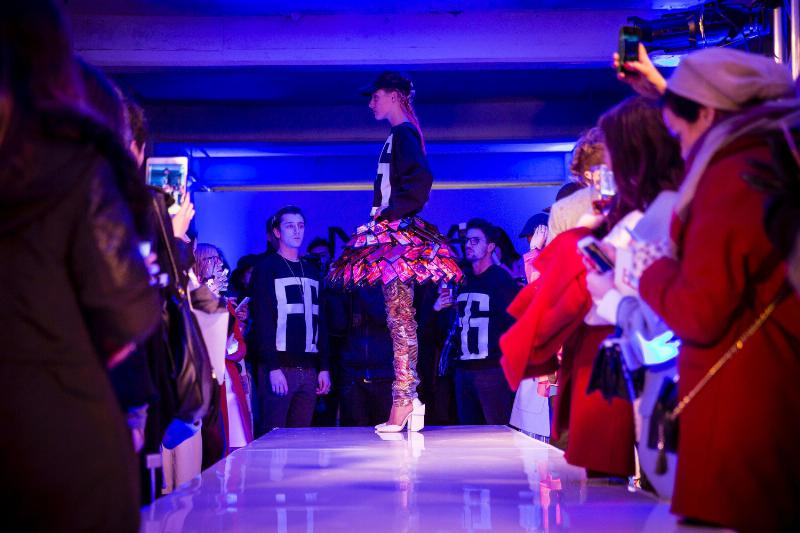Smartphones play an important role on the font row of fashion week shows, with designs online before they hit the end of the runway. Nokia and LFW Designers Fyodor Golan reveal the world’s first interactive skirt.
This the precursor to future clothes that will monitor our existence, and, hopefully, will give useful fashion suggestions like matching, style, weather, compatibility, posture and even information about the feedback of others. The clothes will analyze the pupils and we will inform us if others are pleased with our fashion choice. The interactive fashion pushes the boundaries of what is possible in fashion, designing and programming. Here’s a good example. If it will be chiseled, the concept might turn into something exciting in the near future.
The world’s first interactive skirt is made up of Nokia Lumia 1520 smartphones. The innovative skirt was designed by the Fashion Fringe winners and created by Kin and uses static pictures captured by the phone, or live feeds on the 80 screens that adorn it – allowing it to change around the wearer and their day.
Images on the screens change colour as the skirt moves, creating a shimmer effect simulating the realistic tactile character of actual fabric. This is achieved through a purpose built app that utilises global positioning, to ensure the shimmer happens in line with the models movement. Its creators believ that this is the first time a skirt of this kind has been created.
“This unique project is about exploring the possibilities of smart technology and fashion coming together, as well as supporting new talent to create something special using the beautifully designed Nokia Lumia 1520,” said Annie Kearney, Nokia Brand Lab.
To build the skirt, Kin worked interactively with a combination of software such as Python and C#. Initial drawings were sketched along side Fyodor Golan. The sketches were then developed using engineering tools and rapid prototyping tools such as 3D printing and laser cutting to evolve the initial design.




